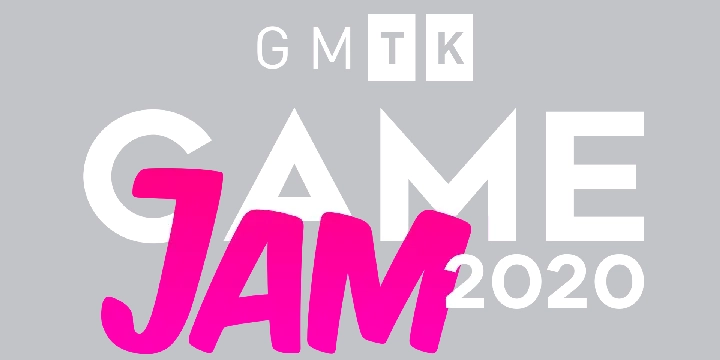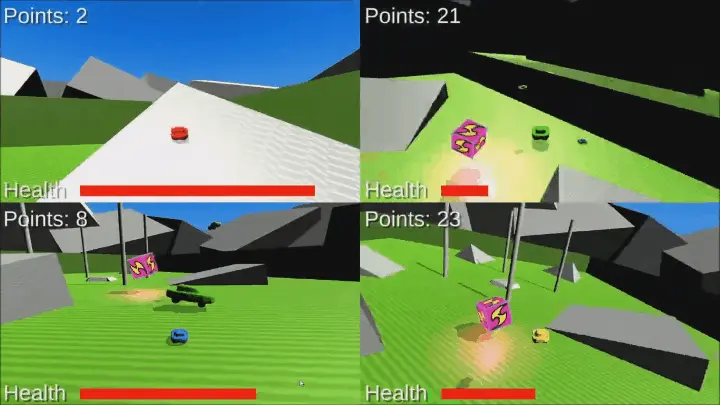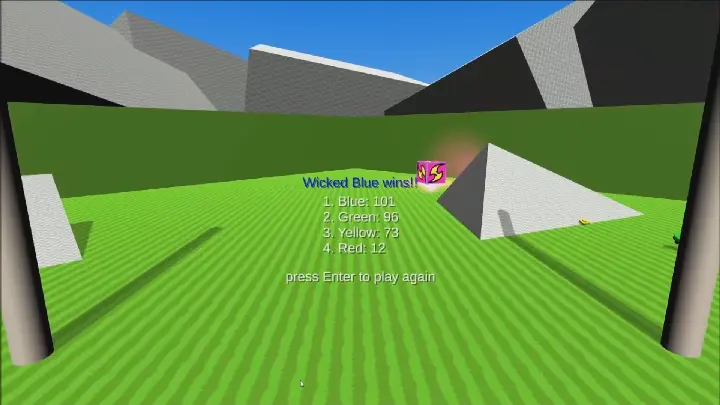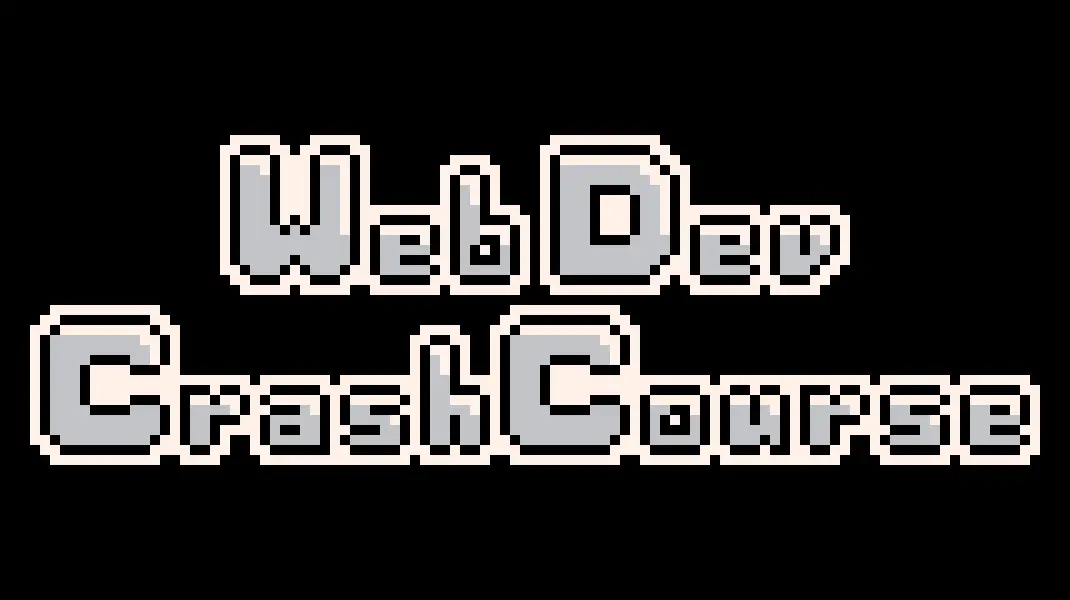◀ prevnext ▶
Good enough is sometimes not good enough
Other · Mar 7th, 2021

Last year, Mark Brown, from the YouTube channel Game Maker's Toolkit, ran the GMTK Game Jam 2020, in which you had 48 hours to make a game. Like the Game Jams before it, this jam focused on a clever design idea, which challenged traditional games and forced you to think outside the box. This time, the idea was “out of control”. The theme was open for interpretation, and I wanted to make a game, where the player became faster over time, eventually becoming so fast that they are literally out of control.
It was a multiplayer game, in which you controlled a bumper car. Goal of the game was to rack up points, by bumping into others. If you hit another car or a special cube in the center of the map, your car would increase its speed as well as its size. The game started slow and is rather easy to play, but as you rack up points, the gameplay became very fast and hectic.

At its completion, I was really proud of it. It was fun to play with friends and family. And the absurd speed of the gameplay made people laugh out loud multiple times. But the other participants of Game Jam didn’t quite like it as much. As to my utter disbelief, the game was ranked to be in the worst 20% of all submitted games. And since over 5000 games were submitted, this was quite an accomplishment. It was then, when I realized that I was just so out of touch with reality and that good enough is sometimes just not good enough.
The game idea was fine, I still believe this to this day, but the execution was lacking.
- I hid a text-based tutorial in a menu option. People usually don’t look for tutorials and they are expecting the game to be understandable right away.
- The graphics were ugly and the music was unfitting. Contrary to what people may tell you, graphics do matter, a lot actually, because no one wants to look at an ugly game.
- Also, the game was multiplayer. This was just a dumb idea in general, considering that most people in this game jam were expecting single player games.
- To make the previous point so much worse, I was actually aware that most people weren’t testing games with friends, and thus I programmed bots. Problem is, making good bots is stupidly difficult and even the hot mess that I came up with, ate like half of the development time.
- To make the multiplayer thing so much worse, I did not program networking code. Instead, I mentioned in the tutorial (that no one read), to use an external program, which requires the players to make an extra account. No one will go out of their way and download arbitrary programs, just to play a bad game.

Due to the 48-hour time limit, a lot of corners had to be cut to finish the game. As bad as these decisions were, at the time they actually didn’t seem that bad. They honestly seemed good enough. But in retrospect, it’s obvious how bad these decisions actually were.
This post is not complaining about people not appreciating bad games. Because the thing is, I can’t possibly expect others to play the bad game that I have made, when I myself can’t give damn about the bad game that the dev next to me made. Instead, I decided to increase the quality of my work and put a lot more effort into the projects I want to make. Complaining won’t get you far (unless you’re a critic) and I want to accomplish something, that I can be proud of.
With this blogpost I am trying to kick off a future of amazing projects :)
✝Footnote: This post is not advocating to perfectionism. Perfectionism and “good-enough-ism” are both obstacles that hinder you from creating stuff. If you sway too much into perfectionism, you will never finish a project. If you say to yourself “good enough is good enough” too easily and too many times, you will lose track of what makes your project truly good. The key is to strike a balance, so that you will finish your projects, but don’t produce something that is absolute horse♥♥♥♥.
|
| ▶ | More Other related Posts |
